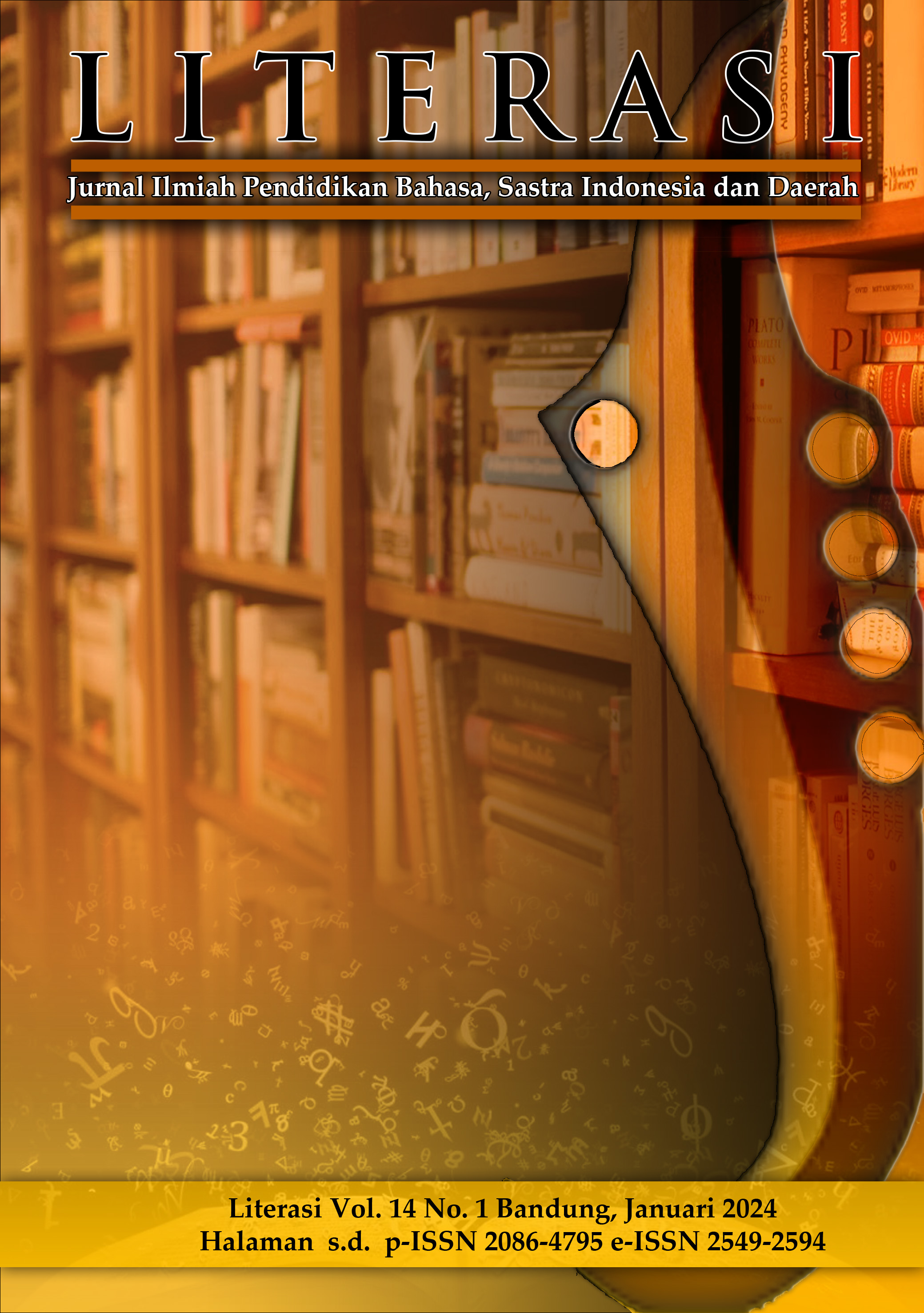REPRESENTASI BUDAYA DAYAK NGAJU KAHARINGAN DALAM RITUAL TAWUR DI KALIMANTAN TENGAH
DOI:
https://doi.org/10.23969/literasi.v14i1.11347Keywords:
speech of Tawur, Dayak Kaharingan communities, Bayar Hajat ceremony, beliefsAbstract
This article aims to investigate the sequence of events of Tawur speech in the Bayar Hajat ceremony, the meaning and function contained in
Tawur speech as a form of culture of the Dayak Kaharingan community in Central Kalimantan. The source of data in this article is derived from the text of the Tawur incantation. This research method utilised ethnography and literature study. The results of the data analysis reveal that the Dayak Kaharingan community’s belief in the existence of
Ranying Hattala Langit (God), Sangiang, rice spirits id reflected in the Tawur speech. In addition, the analysis also revealed a number of meanings implied in the Tawur which include, the meaning of God as the Creator, the meaning of supplication, the meaning of the existence of rice spirits and Sangiang, the meaning of respect, and the meaning of togetherness. Finally, the Tawur speech also includes two language functions, consisting of emotive function and conative function. When
connected between the meaning and function contained in the Tawur speech, it is a form of creating balance, harmony, and world safety for
human beings.
Downloads
References
Dhavamony, Mariasusai. (1995). Fenomenologi Agama. Yogyakarta: Kanisius.
Frawley, W. (1992). Linguistics Semantic. Hillsdale, New Jersey: Lawrence Rlbaum Associates Publisher.
Friedman, J. (1994). Cultural identity and global process. Cultural Identity and Global Process, 1-288.
Hall, S. (Ed.). (1997). Representation: Cultural representations and signifying practices (Vol. 2). Sage.
Hall, S. (2015). Cultural Identity and Diaspora. In Colonial discourse and post-colonial theory (pp. 392-403). Routledge.
Koentjaraningrat, M., & di Indonesia, K. (2002). Pengantar Ilmu Antropologi, Cet. 8. Jakarta: Rineka Cipta.
Maunati, Y. (2004). Identitas Dayak: Komodifikasi dan Politik Kebudayaan. Yogyakarta: LKiS.
Pals. Daniel. (2006). Dekonstruksi Kebenaran: Kritik Tujuh Teori Agama. Yogyakarta: IRCiSoD.
Pujileksono, S. (2015). Metode Penelitian Komunikasi: Kualitatif. Malang: Kelompok Intrans Publishing.
Purwadi. (2005). Upacara Tradisional Jawa. Yogyakarta: Pustaka Pelajar.
Riwut, N. (2003). Menyelami Kekayaan Leluhur. Palangka Raya: PUSAKALIMA.
Rutherford, J. (1990). Identity: community, culture, difference. Lawrence & Wishart.
Situmorang, S. (2004). Toba Na Sae; Sejarah Lembaga Sosial Politik Abad XIII-XX. Jakarta: Komunitas Bambu.
Spradley, J. P. (1979). The Ethnographic Interview. New York: Holt, Rinehart and Winston.
Tri Prasetya, J. (2004). Ilmu Budaya Dasar (Lengkap). PT. Rineka Cipta: Jakarta.
Downloads
Published
Issue
Section
License
Copyright (c) 2024 Literasi: Jurnal Ilmiah Pendidikan Bahasa, Sastra Indonesia dan Daerah

This work is licensed under a Creative Commons Attribution 4.0 International License.
Hak cipta artikel yang diterbitkan di jurnal ilmiah dimiliki oleh penerbit, bukan penulis. Hal ini berkaitan dengan koordinasi hak akses untuk cetak ulang atau penggunaan lainnya. Dalam hal ini penerbit mempunyai keluluasaan untuk mempublikasikan artikel sesuai dengan kesepakanan Transfer Agreement (penyerahan hak cipta) antara penerbit dengan penulis.















